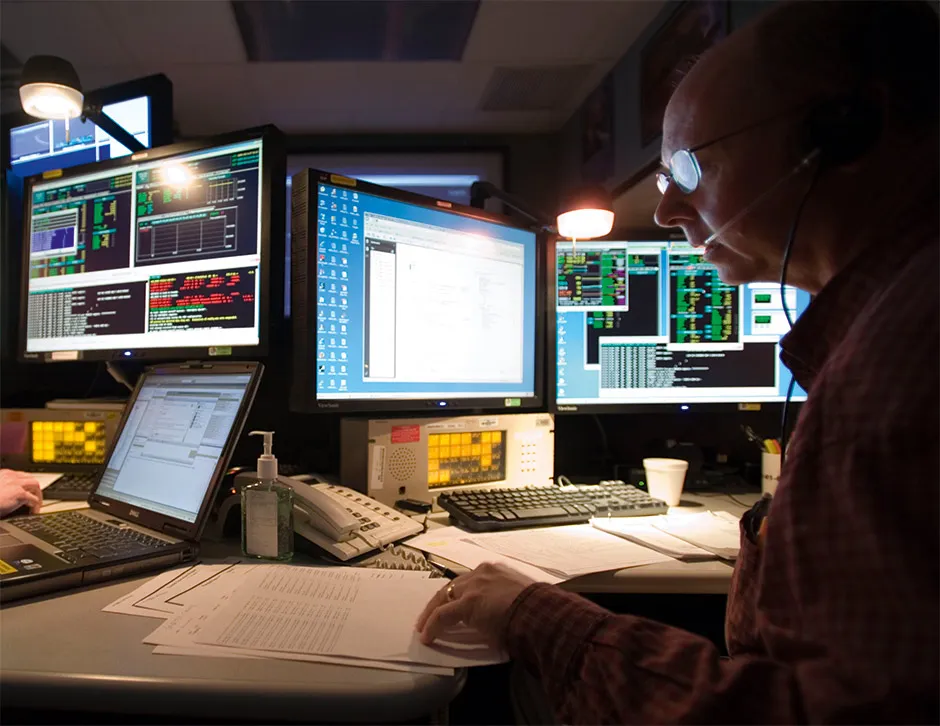The Hubble Space Telescope launched 30 years ago, on 24 April 1990.Hubble’s science operations manager Kevin Hartnett joined the team in 1997, and is responsible for overseeing scientific aspects of the space telescope’s operations.
With a bachelor’s degree in physics and astronomy, his career began in the private industry before he started working at NASA.
How is the Hubble Space Telescope doing?
It’s performing at the peak of its capabilities and functioning marvellously. There aren’t as many available backups as there were some years ago. For instance, Hubble has six gyros to keep itself orientated, but only three are active and we need three to do our best science.
Our engineers are coming up with clever ways to combat ageing. Things dim, they fade, one side of the detector has a greater sensitivity than the other. But they’ve kept the observations really at the forefront of what anyone can do on the ground or in space, and that’s pretty remarkable.
Discover more about the Hubble Space Telescope:
- 8 beautiful Hubble Space Telescope images you probably haven't seen before
- Hubble takes us on a journey to the centre of the Galaxy
- 10 of Hubble’s greatest discoveries
- Who really discovered Hubble’s Law?
What sets Hubble apart?
It’s a one-stop-shop for very stable, high-contrast imaging and spectroscopy from the near-infrared wavelengths right through to the ultraviolet, with a 2.4m mirror above the atmosphere.
We have very fine guidance sensors too. In layman’s terms, it’s like being on top of the Washington Monument in Washington, DC and keeping a laser pointer on a dime on the top of the Empire State Building in New York City 330 kilometres away for 24 hours. So once we lock on, we really lock on target.

What type of research does Hubble do?
Solar System astronomy, galaxies, large-scale structure of the Universe, and everything in between – Hubble has made major contributions to every astronomical field.
There are also legacy programmes. For instance, there’s a large project right now to observe every Milky Way globular cluster. Not because someone wants to write a paper on all 150 clusters, but the data is there if someone ever does.
Does the old data still get used?
Oh my, yes. There’s a lot of interesting science you can do with a 25-year baseline. If you’ve got good observations from 25 years ago, you can compare them to similar observations today.
You can see jets actually moving out of the big quasar in M87. You can calculate velocities. Scientists can get a lot out of data like that.
Read more interviews:
- Is there a wormhole hiding at the centre of the Milky Way?
- The quest for quantum gravity: why being wrong is essential to science
How long does Hubble have left?
Hubble doesn’t have a propulsion system and it is slowly falling to Earth. A report from September 2018 predicts Hubble re-entry no earlier than 2027, and the mean date is around 2038.
We’re very in-tune with the performance of the telescope and we’re trying to pamper all of its systems, to keep it running as long as possible.
- This article first appeared in issue 348 ofBBC Science Focus Magazine
From BBC Sky at Night Magazine:
- Hubble at 30: three decades of the famous space telescope
- 'How we serviced Hubble': Mike Massimino reveals all
- How Hubble’s successor the James Webb Space Telescope will observe the Universe
- Astronaut Kathy Sullivan on launching the famous space telescope
- What was wrong with Hubble’s mirror, and how was it fixed?
- Radio Astronomy Podcast: 30 years of the incredible space telescope
- How did the space telescope come about?
- What Hubble's launch meant to me, as an amateur astronomer
- How Hubble changed our view of the Universe
- Why did astronauts service the Hubble Space Telescope?
- How the Hubble Space Telescope is used to study exoplanets
- A history of the Hubble Space Telescope

